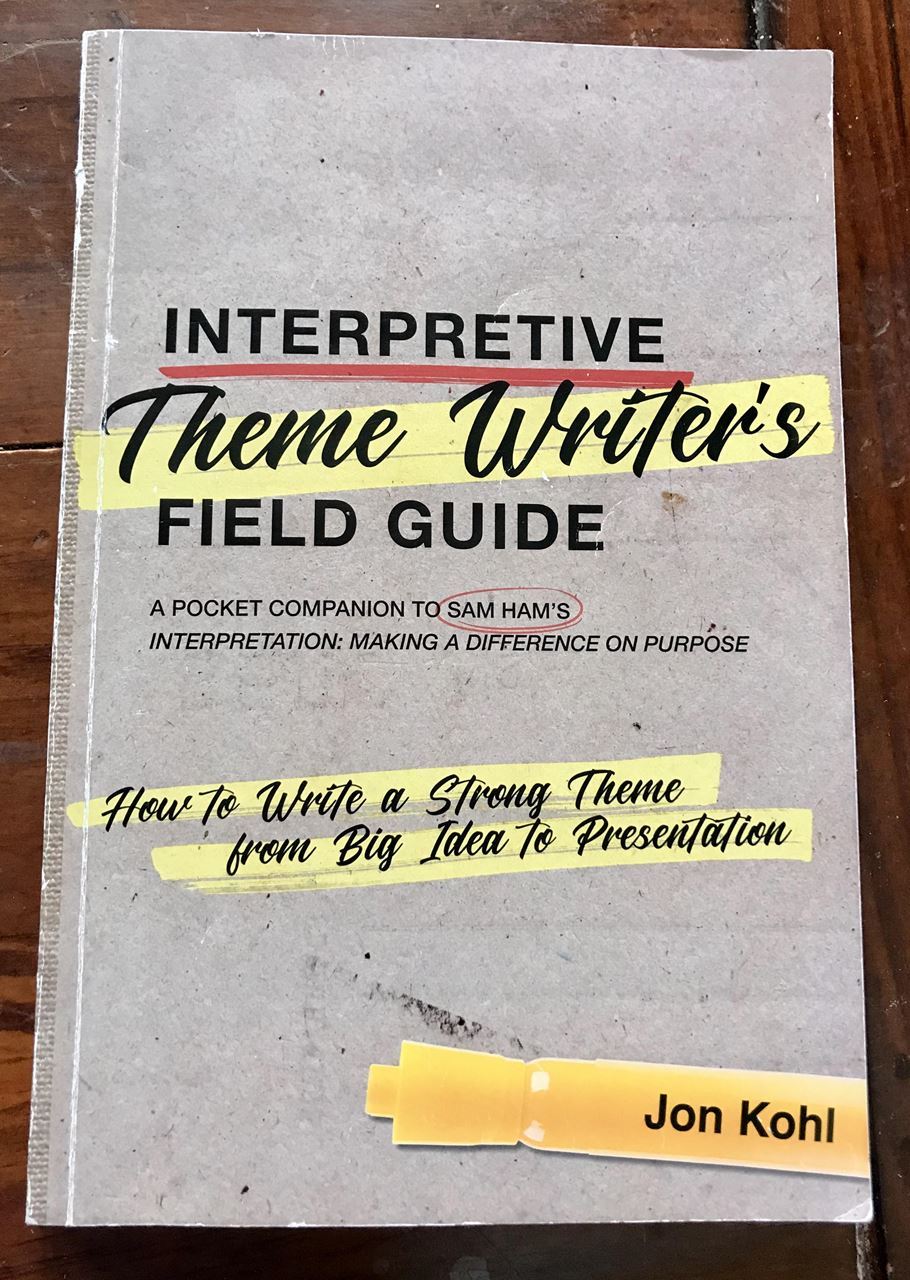By Wendy Niven
If you are looking to up your theme writing game, Jon Kohl’sInterpretive Theme Writer’s Field Guide is a must-have. Written to complement and build upon another essential ingredient in the heritage interpreter's toolkit - Sam Ham’s Interpretation: Making a Difference on Purpose - the Interpretive Theme Writer’s Field Guide is dedicated to the art and craft of writing great interpretive themes.

This isn't a book that one reads once cover to cover. There's too much in it to absorb in one read-through. I remember learning the basics of exhibit design from Jim Todgham, from whom I took over maintaining the exhibits at Jasper National Park's Icefield Centre. He taught me that interpretive exhibits need to appeal to three different types of visitors - Streakers, Strollers, and Studiers. In order to really get all the meat that's in this book, I think I one needs to do all three.
This is also not a book that one reads and files away. The intent is for your edition to become dog-eared as you bring it into the field with you - the place where inspiration and creativity are most likely to strike. It is a great tool!
So, who is Jon Kohl? Based in the US and Costa Rica, Jon was introduced to environmental interpretation while working at the Costa Rican Simon Bolivar National Zoo and Botanical Gardens. A writer from an early age, Jon has been developing his interpretation skills since the early 1990s. In the book Jon maintains there are plenty of resources for an interpreter to learn the theory of thematic interpretation, but nothing that helps one hone their skill at what is arguably the most important aspect of the craft - writing a great theme.
The Interpretive Theme Writer’s Field Guide is set up as a series of stations that take the reader through 7 distinct stages in order to dissect the theme writing process and connect it to the larger objective of interpretive program development.
It begins by setting a solid stage of what interpretation is - and what it isn’t. From this base, the field guide takes you through audience types (primary and secondary), big ideas (the precursor to your theme), the vehicles for your big ideas (your themes), igniting inspiration, and how to present your ideas to your audience in a provocative, meaningful way.
Wrapping up with how to create a theme-writing team (it takes a village to write a theme!), and how your theme fits into the bigger-picture interpretive framework, the field guide is full of quotes, examples, exercises, tips, tricks, and worksheets to help you understand, practice and dig deeper into how to create a really strong theme based on Sam Ham’s “fundamental criteria of provocation and power”.
The knowledge, skill and insight contained within the pages of the Interpretive Theme Writer’s Field Guide is deep. For me, as a budding interpreter, this is a book that I plan on returning to often. I have already broken family rules (sorry mom and dad!) by folding over page corners to mark the spots that inspire or intrigue me. I hope my copy is well bound, because I think it is going to take a little abuse as I dig into it to develop my skills in creating compelling interpretive themes and programs.
Wendy Niven lives and works as an interpretive guide in Jasper, Alberta. She is also an interpretation instructor for the Interpretive Guides Association and is always looking to improve her thematic interpretation skills. As you can see from the image, Wendy has already started to smash up her copy of Jon's Interpretive Theme Writers Field Guide.